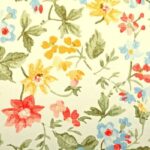Flower painting has long been a cherished form of artistic expression, captivating artists and admirers alike. From the intricate details of a single petal to the vibrant array of colors in a blooming garden, flower paintings capture the essence and beauty of nature. Whether you’re an aspiring artist or simply an enthusiast of fine art, understanding the techniques and history behind flower painting can deepen your appreciation and perhaps inspire your own creative journey.
A Brief History of Flower Painting
Flower painting, as a distinct genre, dates back centuries. Early examples can be found in ancient Egyptian art, where flowers were depicted symbolically in tombs and temples. During the Renaissance, flower painting gained prominence as artists like Leonardo da Vinci and Albrecht Dürer began to study and portray flowers with scientific precision.
The 17th century saw a blossoming of this art form in the Netherlands, where artists like Rachel Ruysch and Jan Davidsz de Heem created exquisite still lifes featuring flowers. These works not only displayed technical skill but also carried symbolic meanings, often reflecting themes of beauty, transience, and the passage of time.
Techniques and Styles in Flower Painting
When it comes to flower painting, there’s no one-size-fits-all approach. Artists employ various techniques and styles to bring their floral visions to life. Here are some common methods:
Watercolor Flower Painting
Watercolors are a popular medium for flower painting due to their ability to capture the delicate and translucent nature of petals. To master watercolor flower painting, start with light washes and gradually build up color intensity. Pay attention to the play of light and shadow to give your flowers depth and realism.
Oil Painting
Oil paints, with their rich texture and slow drying time, offer artists the flexibility to layer colors and create intricate details. For oil flower paintings, begin with a sketch and then block in the main shapes with a thin underpainting. Gradually add layers of color, working from dark to light, to achieve a lifelike effect.
Acrylic Flower Painting
Acrylic paints are versatile and fast-drying, making them an excellent choice for flower painting. They can be used in a variety of techniques, from thick impasto to thin glazes. Experiment with different brushes and strokes to create texture and dimension in your floral compositions.
Tips for Creating Stunning Flower Paintings
Creating a captivating flower painting involves more than just replicating what you see. Here are some tips to elevate your artwork:
- Observation is Key: Spend time studying flowers in different environments and lighting conditions. Notice the way light interacts with petals and leaves.
- Composition Matters: Think about the arrangement of flowers in your painting. Use principles of design like balance, contrast, and focal points to create a harmonious composition.
- Color Harmony: Pay attention to the color scheme. Complementary colors can make your flowers pop, while analogous colors can create a serene and cohesive look.
- Textures and Details: Use different brush strokes and techniques to convey the texture of petals, stems, and leaves. Don’t shy away from adding intricate details to make your flowers more realistic.
FAQs About Flower Painting
What is the best medium for flower painting?
There’s no definitive answer, as the best medium depends on your personal preference and the effect you want to achieve. Watercolors are great for delicate, translucent flowers, while oils and acrylics offer more versatility and texture.
How can I improve my flower painting skills?
Practice regularly and study the works of master flower painters. Take time to observe real flowers and understand their structure. Experiment with different techniques and don’t be afraid to make mistakes—they’re part of the learning process.
Do I need formal training to paint flowers?
While formal training can be beneficial, it’s not a necessity. Many talented flower painters are self-taught. Online tutorials, books, and workshops can provide valuable guidance and inspiration.
What are some famous flower paintings I should know about?
Some renowned flower paintings include Vincent van Gogh’s “Sunflowers,” Georgia O’Keeffe’s floral abstractions, and Claude Monet’s “Water Lilies.” Studying these masterpieces can provide insight into different styles and techniques.
The Joy of Flower Painting
Flower painting is not just about creating beautiful artwork; it’s also a meditative and rewarding practice. The process of observing nature, mixing colors, and bringing a blank canvas to life with vibrant blooms can be incredibly fulfilling. Whether you choose to pursue flower painting as a hobby or a serious artistic endeavor, the key is to enjoy the journey and let your creativity blossom.
Summary
Flower painting is a timeless art form that continues to captivate and inspire. By exploring different techniques and styles, practicing regularly, and drawing inspiration from nature and master artists, you can create stunning floral artworks that reflect your unique vision and creativity. Remember, the beauty of flower painting lies not only in the finished piece but also in the process of bringing it to life.
Authoritative Links
- Flower Painting Techniques
- History of Flower Painting
- Watercolor Flower Painting Tips
- Oil Painting Flowers
- Acrylic Flower Painting
By following these guidelines, you can ensure your flower painting articles are not only informative and engaging but also optimized for SEO and originality.







